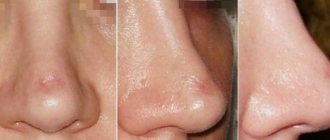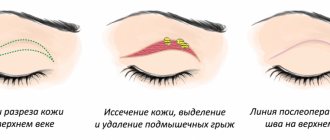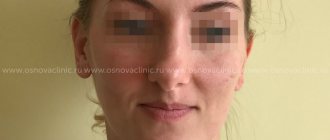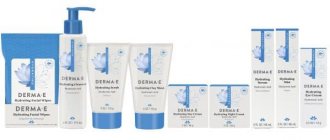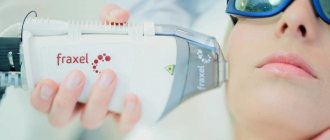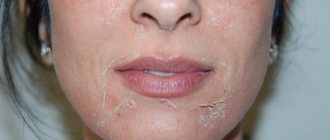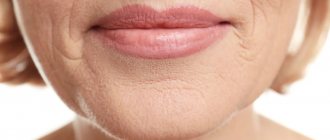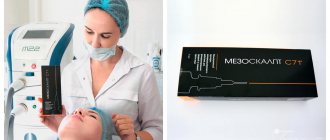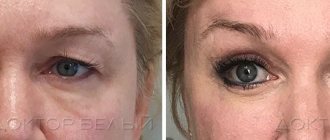ABRASIONS, WHAT TO DO?
What is an abrasion?
- This is a non-painful superficial damage to the upper layers of the skin. Such injuries usually occur when a child hits his knee on the asphalt while playing or playing sports by falling from a bicycle, scooter, skateboard or roller skates. The main difference between abrasions and more serious injuries is that with proper treatment and treatment, they heal within 7-10 days, leaving no scars or scars.
Timely treatment of abrasions with ZELENKA in a marker will protect the injured skin from germs and bacteria that cause inflammation and suppuration.
Due to minor bleeding and damage to soft tissue, a favorable environment for the proliferation of pathogens such as staphylococcus, streptococcus and other types of dangerous bacteria quickly forms on the surface of the abrasion.
How to properly treat an abrasion with GREEN in Marker?
1. Rinse the wound from dirt with hydrogen peroxide or clean water.
2. Stop the bleeding (if any) by applying a gauze bandage or a clean handkerchief to the abrasion for 1-3 minutes until the bleeding stops.
3. Remove the cap from the marker and treat undamaged skin around the abrasion. Repeat treatment should be carried out no more than 1 time per day.
4. After treating the abrasion, apply a sterile bandage. To speed up healing, remove the bandage at home to allow the wound to dry.
Common mistakes when treating abrasions:
1. Using bactericidal powders on a fresh abrasion slows down the healing process of the wound.
2. Applying healing ointments to a damp surface blocks the natural healing of the wound.
3. Constantly wearing a bandage is not recommended because the wound must be allowed to dry.
Treatment by a cosmetologist
If after chickenpox there are scars on the face and other visible areas, and local remedies do not help, what to do next? Cosmetologists now offer a wide arsenal of procedures that are very effective in this case: from a variety of body wraps and chemical peels to laser resurfacing. Let's look at them in order.
Wraps
A product (for example, “Zeytun for scars and stretch marks” or cocoa butter) is applied to cleansed skin in adults with post-chickenpox scars. Next, this area is wrapped in film, and you will need to lie under a thermal blanket so that the active components of the drug penetrate inside the scar tissue, soften it and contribute to the renewal of normal skin in the area.
Peelings
Acid peeling performed by a professional will help remove chickenpox scars on the face. In this case, a mixture of organic (for example, fruit) acids is applied to the scar area, which will destroy this area of connective tissue. As a result, inflammation develops, during which (this does not always happen after 1 session) dermal cells produce “new skin” to replace scar tissue. Although this is accompanied by redness and peeling, this effect for removing chickenpox scars is quite justified.
And Bepanten cream will help speed up skin restoration after the procedure. Its base is dexpanthenol, a substance that we have been used to treating sunburn since childhood. This is provitamin B5, which, quickly absorbed by skin cells and included in their metabolism, stimulates local regeneration.
Microdermabrasion
This procedure is akin to peeling, only inflammation in the scar area is triggered not by acids, but by microcrystals, which a special device uses to treat the skin. Artificial mechanical damage to the epidermis is performed to a controlled depth, triggering the production of new collagen and elastin fibers in the skin.
The results of microdermabrasion are: improved color and elasticity of the skin, narrowing of pores, and a “glow” effect.
Laser resurfacing
How to get rid of old chickenpox scars if gentle methods are ineffective? Contact laser medicine centers. Cosmetologists who professionally perform laser peeling (resurfacing) are able to remove scar “pits” of any severity and age in just a few sessions.
The essence of the method is as follows. A laser is a special, high-energy light. It differs from the one we see in that it can create high temperatures on the surface where it is directed. Its second feature is the absence of light beam scattering.
Fractional laser is more often used to remove chickenpox scars. The method is based on the impact on the scar with fractions of microscopic diameter, which create micro-zones of damage. As a result, regenerative processes are activated and scar tissue is replaced with normal tissue. Trauma to the skin during fractional thermolysis is significantly less than during laser resurfacing, and the recovery period is shorter.
To achieve the result, you need at least 2 sessions, in between which you will have to treat the affected area first with Bepanten for better healing, and when going outside, carefully cover it with products with ultraviolet filters. This is a necessary measure to prevent the formation of hyperpigmentation in the area of the post-varicella scar.
Physiotherapy
To remove atrophic scars after chickenpox, procedures are used that are aimed at introducing substances that dissolve connective tissue into the deep skin layers. Help with this:
- ultraphonophoresis;
- iontophoresis.
Hyaluronic acid injections
Hyaluronic acid is the base that, located between the fibers of the dermis, fills the skin with water. Its injection into the scar area stops the process of formation of connective tissue. In addition, the skin is rejuvenated, smoothed, and becomes more elastic.
HOW TO CARE FOR SEAMS?
Treatment of sutures after surgery is an important and mandatory component of recovery. It is important to understand that the speed of healing of sutures depends on a large number of different factors, provided that proper treatment is carried out.
The healing process lasts from several weeks to several months. The duration of healing is usually influenced by factors such as the size and nature of the wound, its location on the body, and the condition of the skin before and after surgery.
ZELENKA in a bottle with a brush is ideal for treating post-operative sutures.
Treatment with a cotton swab is dangerous and is not recommended, as cotton particles can remain in the wound and cause inflammation of the suture. The type and shape of the scar directly depends on the correctness and duration of treatment at the time of healing. Do not forget to cover the scar site from sunlight so that the healing process occurs evenly.
How to properly treat stitches after surgery with GREEN in a bottle with a brush?
1. Wash your hands thoroughly before handling.
2. Wipe each affected area of skin with a rolled piece of bandage soaked in an alcohol solution. Wait until completely dry.
3. Carefully unscrew the cap from the ZELENKA bottle with a brush, without pressing on the bottle. Carefully, without pressing, treat the entire surface of the scar.
4. After treatment with ZELENKA, apply a disinfected bandage, securing it with an adhesive plaster.
5. Repeat the treatment every day until healing.
UMBILICAL WORN?
A newborn has a special place that requires close attention and care - the umbilical wound. Proper treatment of the umbilical wound protects the baby from infections and inflammation. Complete healing occurs on average 2 weeks after the birth of the child.
ZELENKA in a bottle with a brush is convenient for treating the umbilical wound; the soft brush does not injure the wound.
Many parents are afraid to bathe a baby with an unhealed umbilical wound, but water procedures followed by proper treatment of the umbilical wound are necessary for its speedy healing.
How to properly treat the umbilical wound with GREEN on a newborn?
1. Wash your hands thoroughly before handling.
2. Rinse the wound with warm boiled water.
3. Dry the umbilical wound.
4. Treat the umbilical wound with hydrogen peroxide, from the center to the outer edges, carefully removing the discharge from the wound (the peroxide may foam).
5. Carefully unscrew the cap from the ZELENKA bottle with a brush. Carefully, without pressing, apply brilliant green over the entire surface of the wound and next to it, an area of at least 2 cm
6. Repeat the procedure after bathing the child until the navel is completely healed.
Frequent mistakes:
1. Do not apply a band-aid to an unhealed belly button. The baby's skin needs to breathe. The patch may irritate the baby's delicate skin.
2. When putting on a diaper, do not cover the navel.
Prevention of scars during chickenpox treatment
Chickenpox scars can be prevented. To do this you should:
- cut your nails short and file them to remove sharp edges;
- put on cotton or flannelette mittens for children;
- wear loose clothing made from natural materials;
- change personal and bed linen, especially contaminated with discharge from pockmarks, daily;
- treat wounds with bactericidal preparations several times a day (according to the instructions);
- Take a bath or shower every day, but only if you do not have a fever.
Patients ask why they can’t use washcloths or rub their bodies with a towel after bathing. This is necessary so as not to accidentally injure the pockmarks.
CHICKENPOX
Almost every child suffers from chickenpox in childhood. The antiseptic effect of ZELENKA in the marker is suitable for both delicate children's skin and adults, drying damaged areas of the epidermis (upper layer of skin) and disinfecting the blisters that arise from chickenpox.
Chickenpox is transmitted by airborne droplets during communication or conversation from a sick person to a healthy person. Recurrent diseases are extremely rare.
Treatment with ZELONKA in the marker helps prevent secondary infection of chickenpox, which affects people of all ages, but mainly affects children from 3 to 9 years old.
Chickenpox usually begins with a mild fever and general malaise (temperature 38-39°C); after just a day, a rash may appear on the body, arms, and face. Soon after the rash appears, the spots swell and fill with fluid, forming blisters. The resulting rash causes itching and irritation, and the liquid that accumulates in the blisters during chickenpox is very contagious, as it contains the Varicella Zoster DNA virus (human herpes virus type 3). The virus dies faster when exposed to direct sunlight, ultraviolet radiation and heat. The disease is characterized by seasonality in the form of autumn-winter activity.
How to use ZELENKA to treat blisters that appear on the skin due to chickenpox?
In order not to spoil the skin with scars after an illness, you need to treat rashes in a strict sequence:
1. Take water procedures if there is no high temperature.
2. Allow the blisters to dry without allowing them to fester.
3. Lubricate the dried wounds with brilliant green in a marker, ensuring spot application.
The childhood form of chickenpox is simpler and milder, and differs from the course of the disease in adults (Adults may suffer from complications). The main principle of treating children and adults with brilliant green is to prevent the blisters from becoming suppurated, otherwise the course of the disease will worsen.
Treatment of chickenpox mainly comes down to preventing bacterial complications. To avoid the spread of the virus, a prerequisite is compliance with hygiene rules, including a daily shower and trimming the nails of young children; these simple rules will prevent infections from getting through when scratching the rash.
Treatment with cosmetics
Let's consider how to smear scars after chickenpox:
Contractubex
This is a leader among topical treatments for scars. It has an effect if you start using it immediately after chickenpox ends, while the scars are still fresh. But in order to completely remove chickenpox scars, this cream must be used for at least six months.
The action of Contractubex is based on:
- suppression of the activity of dermal cells that produce excess fiber, which is provided by onion extract and sodium heparin;
- bactericidal effect provided by onions;
- reducing the production of pro-inflammatory substances in skin tissues;
- softening structures that contain a large number of fibers;
- preventing the formation of blood clots in skin vessels. Improving blood circulation promotes the resorption of scars.
Allantoin, which is part of the drug, not only improves healing, but also increases skin permeability to other components of the drug.
Dermatix
This is another effective ointment for scars formed after chickenpox. The drug, unlike Contractubex, can be used to remove even old scars. It contains silicone, which creates a film over the scar, while the other components of the product increase the local temperature. This creates a greenhouse effect, under the influence of which the fibers acquire the correct position.
Zeraderm ultra
A gel containing several vitamins: vitamin K, which strengthens the walls of blood vessels, vitamin E, which inactivates the action of oxygen radicals, coenzyme Q10, which improves skin restoration in the scar area. The gel creates a film, softens the scar, and helps the dermal fibers “line up” correctly.
Kelo-cat
A silicone-based drug, available in the form of a gel and spray. By covering the scar with a film, the product creates a greenhouse effect that helps soften and restore elasticity to the scar and prevent the growth of connective tissue inside. The effects of Dermatix and Kelo-cote are identical.
Kelofibrase
Scar cream works on the basis of urea, a substance identical to that produced in our liver. Applied to the skin, it dissolves the connective tissue of the scar, softens and moisturizes nearby areas, increasing their elasticity.
